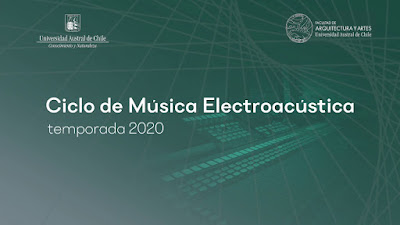The ElectroAcoustic Resource Site (EARS) is back online!
http://ears.huma-num.fr/index.html?fbclid=IwAR0r-klWRnD7aZaq-BQatMphooVt4ndOseTWJtPbuE3Gla1fy6cIOFTgvso
The EARS site, which was coordinated by MTI and went online in 2002, is the most important online research and educational resource in the field of electroacoustic music. Unfortunately it was brought down by a cyberattack, but (with our special thanks to IReMus (Paris) and in particular Pierre Couprie and Thomas Bottini), we are happy to report that is now back in action!
"The ElectroAcoustic Resource Site (EARS) project has been established to provide resources for those wishing to conduct research in the area of electroacoustic music studies. The EARS site takes the form of a structured Internet portal supported by extensive bibliographical tools. To aid the greater understanding of the opportunities offered by these radical forms of sound organisation, as well as their cultural impact, the project cites (or links directly to) texts, titles, abstracts, images, audio and audio-visual files and other relevant formats.
The project strives to conceive of electroacoustic music in its widest possible sense, acknowledges the interdisciplinary nature of the field, and aspires to the greatest possible breadth and inclusiveness. In the future it is hoped that there will be a form of automated information retrieval to aid in keeping the site’s bibliography up to date.
EARS received its first funding in 2001 and went online for the first time (English initial glossary and index only) in 2002. The project was originally co-ordinated at De Montfort University’s Music, Technology and Innovation Research Group (now Music, Technology and Innovation – Institute for Sonic Creativity (MTI2), Leicester, UK) by Leigh Landy and Simon Atkinson in collaboration with the project’s Associated Researcher, Ricardo Dal Farra, and the Research Fellows, Rob Weale and Pierre Couprie. EARS was originally supported by an internation consortium consisting of Rosemary Mountain, Marc Battier, Joel Chadabe, Martin Supper and Kenneth Fields. Its glossary translations were made by Pierre Couprie (French), Ricardo Dal Farra (Spanish), Laura Zattra (Italian) and Martin Supper (German).
It has been placed on a new platform in 2020 after surviving a cyber-attack. The platform uses Sherlock which is an engineering-research project in digital humanities bringing together different disciplines Its objective is to develop a web environment for the publication and semantic annotation of data & documentary sources to assist researchers in the constitution, confrontation & dissemination of their analytical & critical work. We would like to thank IReMus (Paris) for its support, in particular Pierre Couprie and Thomas Bottini for porting the site."




